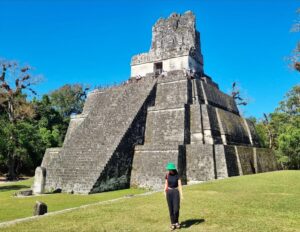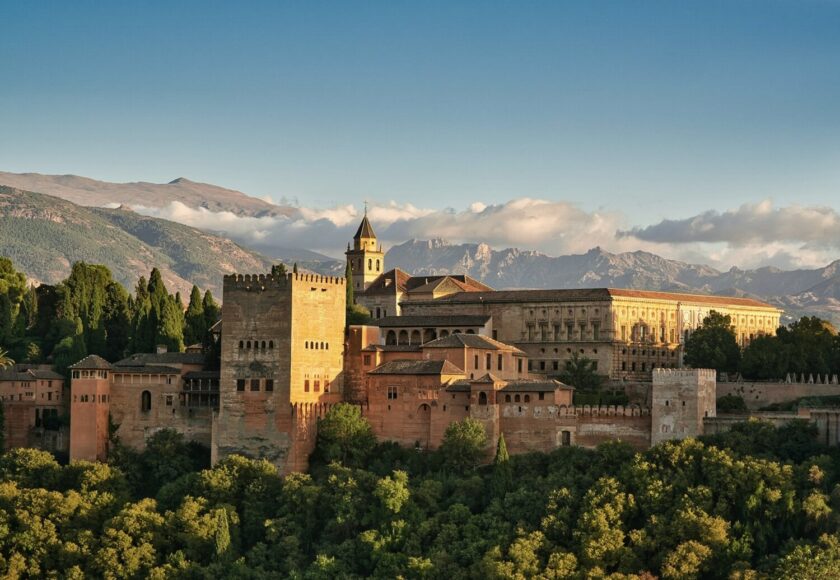
Give him alms, woman, for there is nothing sadder in life than being blind in Granada.
- Francisco de Icaza
If you’ve ever been to Granada then you’ll know that this quote is on every piece of pottery they have. The whole city and surrounding mountainscape is a feast for the eyes and provides nourishment for the soul.
Granada still has a huge Middle Eastern influence that is visible all around. From the dome architecture and exotic tiling of the Alhambra to the Arabic quarter in the centre of town, Granada is a fascinating Spanish city with an eastern twist.
I have decided that if I ever move to Spain and I can choose anywhere in the country to live, I think Granada would be it. You can spend your summer weekends on the beach and hitting the hiking trails, and your winter weekends skiing in Sierra Nevada. What more could you ask for?
I don’t actually have any intention of moving to Granada (I’m not sure I would handle the heat in summer), but I love the idea of it. Instead, it’s high on my list of places to revisit. The wonderful mix of Arabic and laid-back Spanish culture will always draw me back to Andalucia.
If you’re thinking of visiting Granada, but haven’t made up your mind, hopefully you can finally be persuaded. Granada is a transportive place that feeds the imagination. The perfect anecdote if you’re looking to break up the humdrum of everyday life.
I’m pretty sure that once you’ve visited, you’ll agree that Granada is certainly one of Spain’s most beautiful cities…
An ode to pomegranates
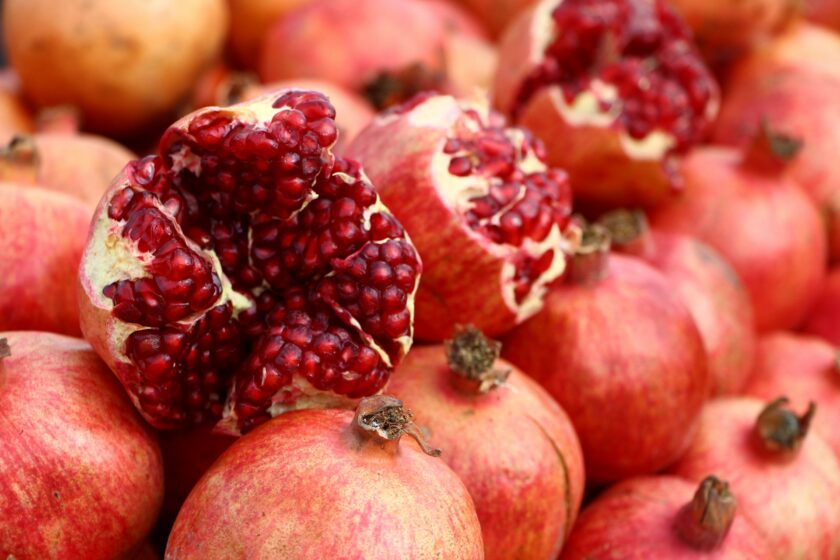
My favourite thing about this city has to be the fact that the Spanish word granada means pomegranate – and it’s something they celebrate very well. Keep your eyes peeled and you’ll spot pomegranates in some unlikely places. The local council adorns manhole covers, fire hydrants and other typically boring urban features with these joyful fruits!
Perhaps the most famous ode to this jewel-like fruit, which symbolises abundance, prosperity, and vitality, is Fuente De Las Granadas (Pomegranate Fountain) in Plaza del Humilladero. It depicts a water nymph on top of a pile of pomegranates.
In Granada, as in many Mediterranean climates, pomegranates are harvested from late summer through to autumn, with peak ripeness often occurring in October and November. During this time, the city’s streets, markets, and orchards are adorned with the rich, ruby-red fruit of the pomegranate, ready to be enjoyed fresh or used in culinary delights such as juices, salads, and desserts.
Time travel at the Alhambra
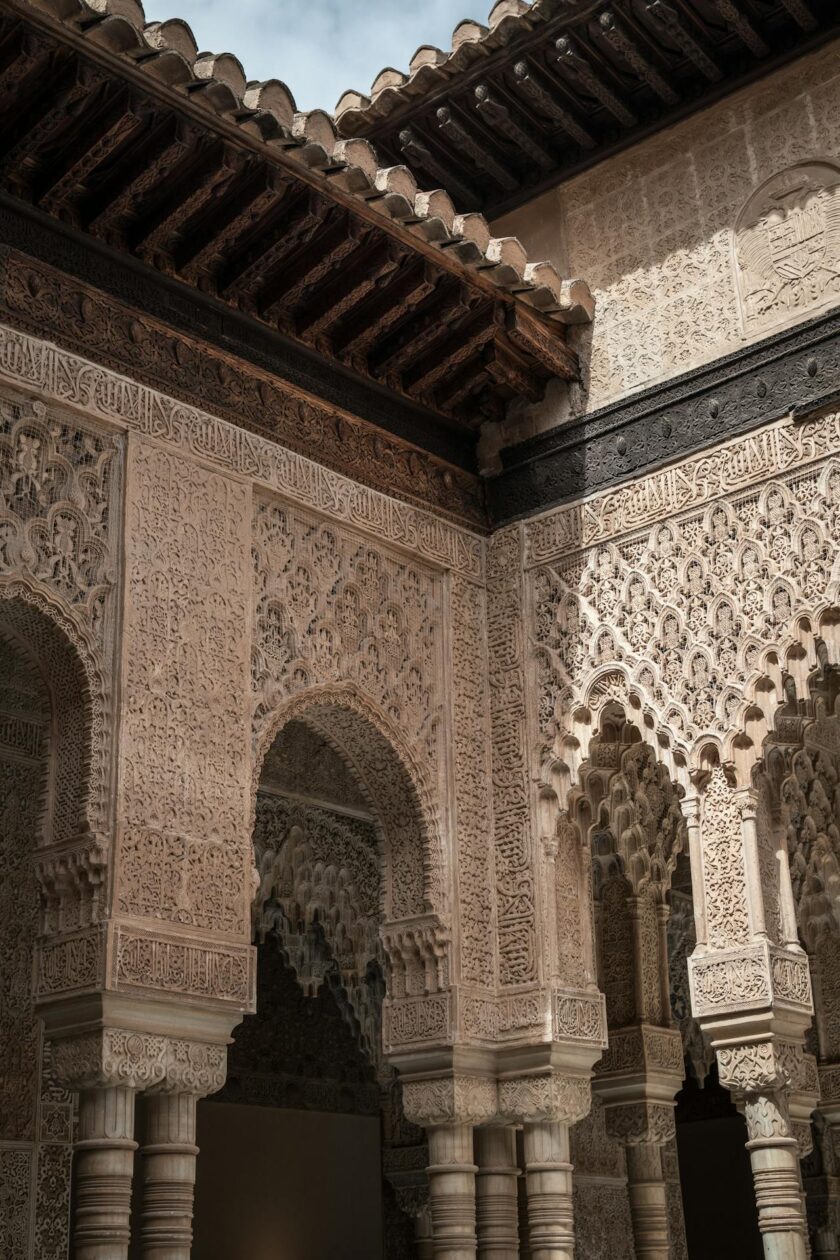
The world-famous Alhambra is a real feast for the eyes. I’d dreamt of visiting the palace since I was little girl. You see, being brought up in Bradford, the closest thing I experienced to it was the Alhambra Theatre. It doesn’t take a genius to work out where the theatre took inspiration from.
As a child I marvelled at its gilded splendour, and watched the odd musical and play that transported me to a world of fantasy and face-to-face with the occasional Z-list celebrity (anyone off the tele was exciting back then!). While it wasn’t the ‘real’ Alhambra, Bradford was certainly better off for having it, and so too are my childhood memories.
However, perhaps for us Brits, the Alhambra Palace is most famously known as the former home of Catherine of Aragon, Henry VIII’s first wife. She lived at the Alhambra right before she set sail to England at the rather young age of 15.
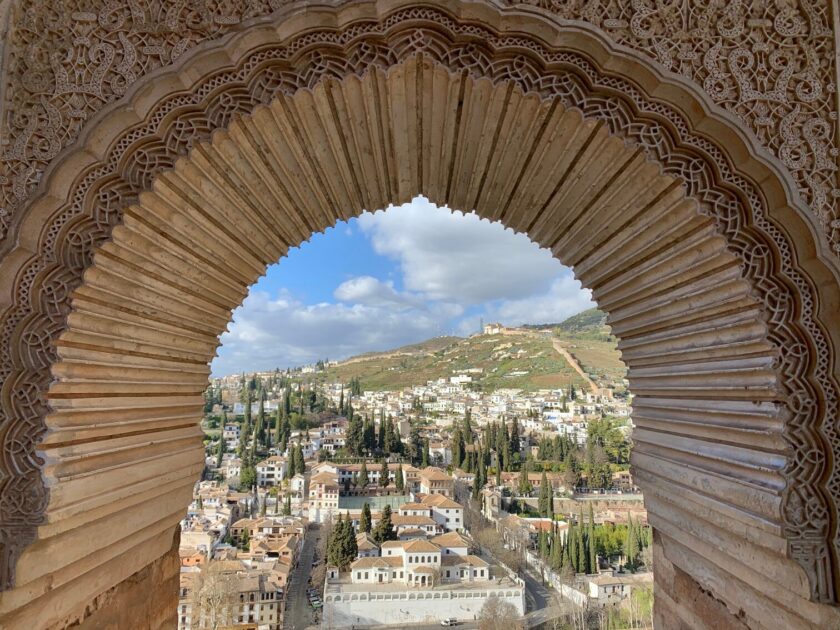
Anyhow, back to my trip. A magnificent complex of palaces and fortresses, the Alhambra was built in the 13th and 14th centuries by the Moorish Nasrid dynasty which ruled over Andalucia in the Middle Ages. With its ornate halls adorned with exquisite tilework, intricate carving, and delicate stucco, the Alhambra’s beauty slowly unravels itself.
Intricate geometric patterns, arabesques, and calligraphy adorn the walls, ceilings, and arches, reflecting Islamic art’s emphasis on abstract ornamentation and mathematical precision. The use of vibrant tiles, known as ‘azulejos’, create mesmerising mosaics that adorn endless surfaces, depicting intricate floral motifs, swirling arabesques, and Quranic inscriptions. The delicate stucco work, or ‘muqarnas’, forms elaborate honeycomb-like patterns that embellish domes and ceilings, adding depth and texture to the architectural spaces.
Additionally, the Alhambra’s artistry extends to its lush gardens, where water features meticulously landscaped greenery, and fragrant blossoms create a serene oasis, inspiring contemplation and reflection. Through its art, the Alhambra not only showcases the technical mastery of its craftsmen but also serves as a testament to the rich cultural exchange and artistic innovation that flourished during the height of Islamic Spain.
Recommended: I pre-booked a ticket for my visit online here, which I’d highly recommend mostly because I saw the size of the queues which I got to skip! These tickets will give you access to the Alhambra itself, the Alcazaba, the Generalife (the gardens) and the other beautiful buildings spotted along the way such as the Mosque Baths.
Soak in views from the Alcazaba Fortress
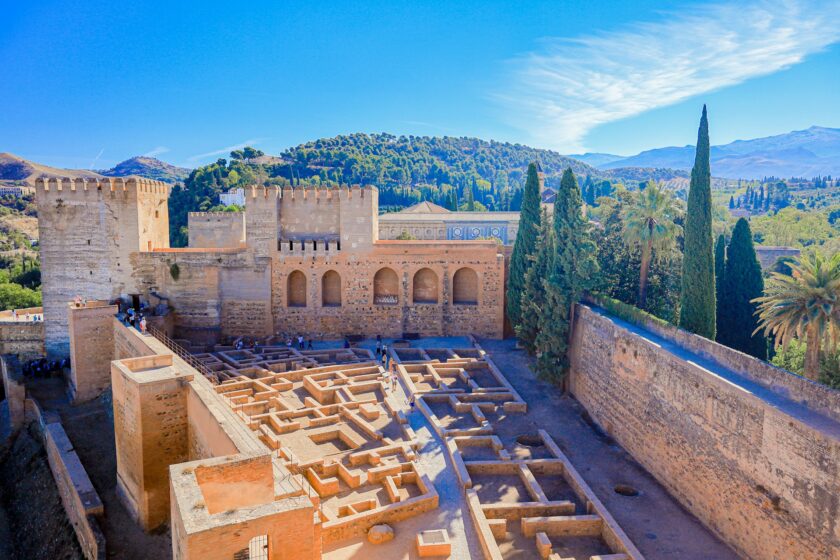
For one of the best views of the city, the Alcazaba Fortress is the place to go. The fortress is the oldest part of the palace and is the ancient military area.
The Alcazaba Fortress in Granada was built for strategic and defensive purposes. It was constructed during the 9th century by the Berber ruler Sawwar ben Hamdun, who established the city’s first Muslim settlement. Later, it was reconstructed by Muhammad I, the founder of the Nasrid dynasty, the last Muslim dynasty in the Iberian Peninsula.
Over the centuries the fortress played a crucial role in defending the city against attacks and sieges, including the prolonged assaults by Christian armies during the Reconquista, the centuries-long campaign to reconquer the Iberian Peninsula from Muslim rule.
Today, the Alcazaba Fortress stands as a symbol of Granada’s rich and diverse history, attracting visitors from around the world to admire its impressive architecture, panoramic views of the city, and evocative reminders of its storied past.
Mirador de San Nicolas: a view to remember
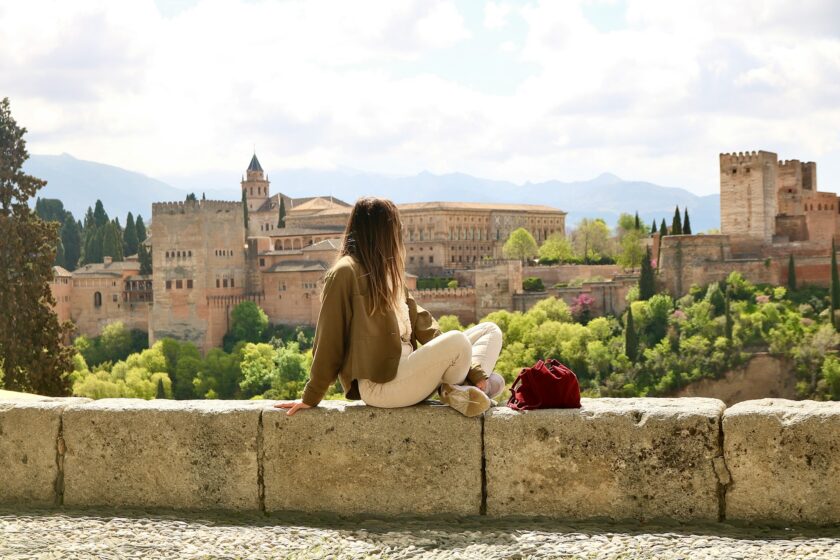
Now for the best view of the Alhambra, and arguably across the whole city can be found at Mirador de San Nicolas. It is a small plaza situated in the heart of the Albayzin (Alabacín) neighborhood, the historic Moorish Quarter of the city,
To reach there, you will stroll uphill through cobbled streets, where you can enjoy Moorish architecture, decorative designs, potted plants and ornamentations en route.
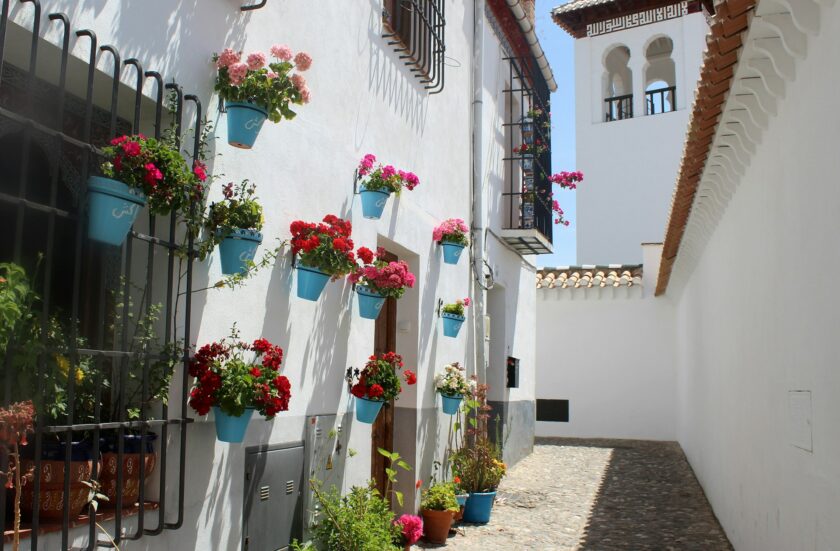
After approximately 25 minutes you will set eyes upon the Church of San Nicolás, and the view you’ve been waiting for – now you can rest!
The view spans across the Alhambra and beyond the snow-capped mountains of the Sierra Nevada. No matter what hour you arrive, it’s a view to remember. However, many people come for sunset, and this is largely due to a claim made by Bill Clinton. Upon visiting the site in 1994, Bill stated, “This is the most beautiful sunset in the world.”
Inside the Madrasa of Granada
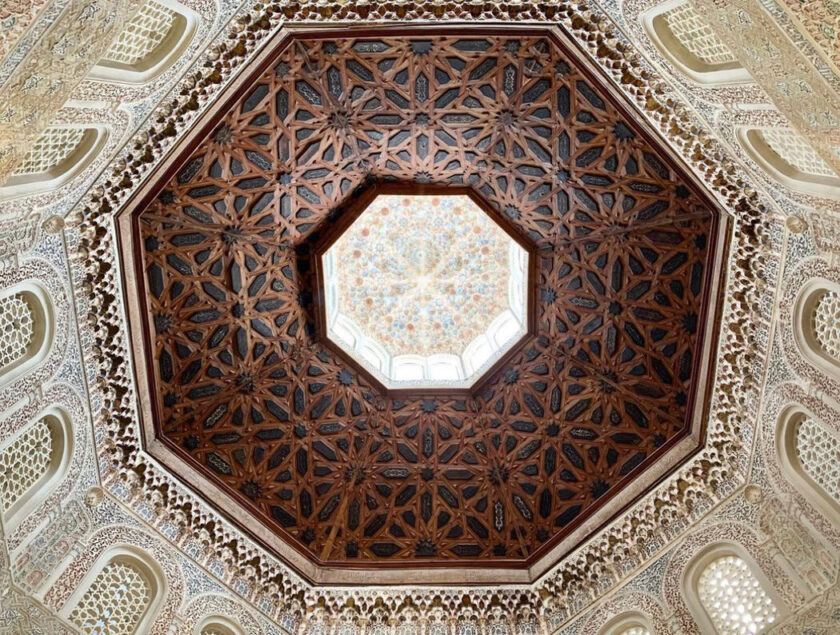
What I appreciated most about visiting Andalucia was how Moorish and Christian architecture sits beautifully together to reveal a long and interesting history.
The baroque façade of Palacio de La Madraza de Granada and how it contrasts with its interior is a good example. Inside is the most beautiful prayer room I’ve ever seen.
The story goes that it was covered under plaster and boarded up in the city’s religious conversion from Muslim to Christianity, and lay hidden for centuries. It was later only discovered when the building needed repairs and they have kept it open ever since. The ceiling is covered in star shaped wooden ornaments typical of Islamic architecture and the walls were intricately stucco with complex floral-geometrical designs and Arabic inscriptions that recite sutras from the Quran.
Drift, ramble & stroll through the Alcaiceria
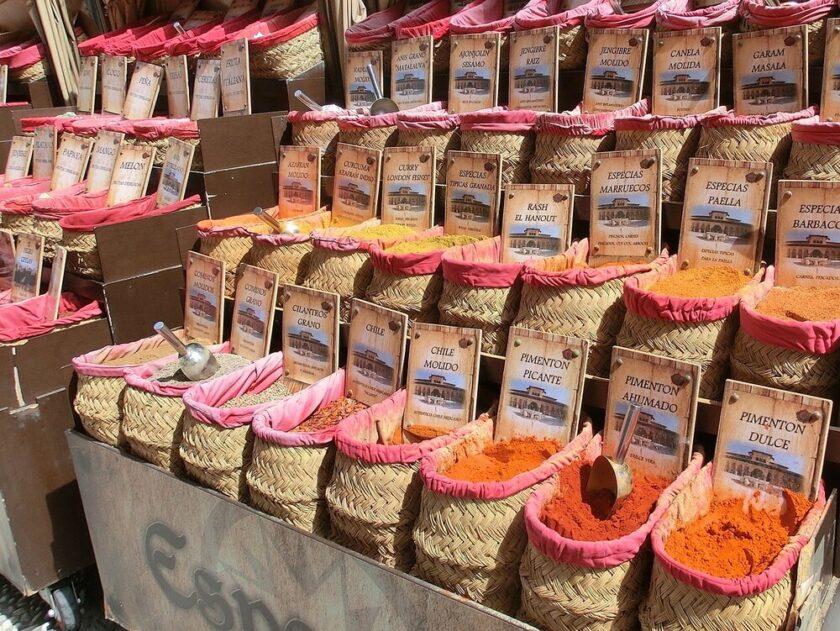
For all that glitters, make your way to the Alcaiceria – I was transported straight back to the souks of Morocco. My favourite thing about Morocco are the souks and Granada has the most quaint, mini version of them. The vendors were even speaking among themselves in Arabic.
I picked up a few spices, but mostly I just revelled in the atmosphere. It’s a great place to soak up vignettes of daily life, peruse speciality shops, try local cuisine, and also pick up a few souvenirs.
If you’re appreciative of craftsmanship, be sure to look out for a shop called Taracea Artesanía del Arbol. It specialises in Mudéjar art and granadian taracea, reflected on large-scale pieces like furniture, down to smaller objects like wooden handcrafted boxes and chess sets that you can easily pack up and take home.
Often, with each city I write about, I suggest simply strolling around, and this is especially true for Granada. So much of what makes the city pleasurable are the beautiful views that you can see for free, and the small quirky details you can find adorning the buildings and along the city streets.
Further reading: Getting the train between Granada, Cordoba & Seville.
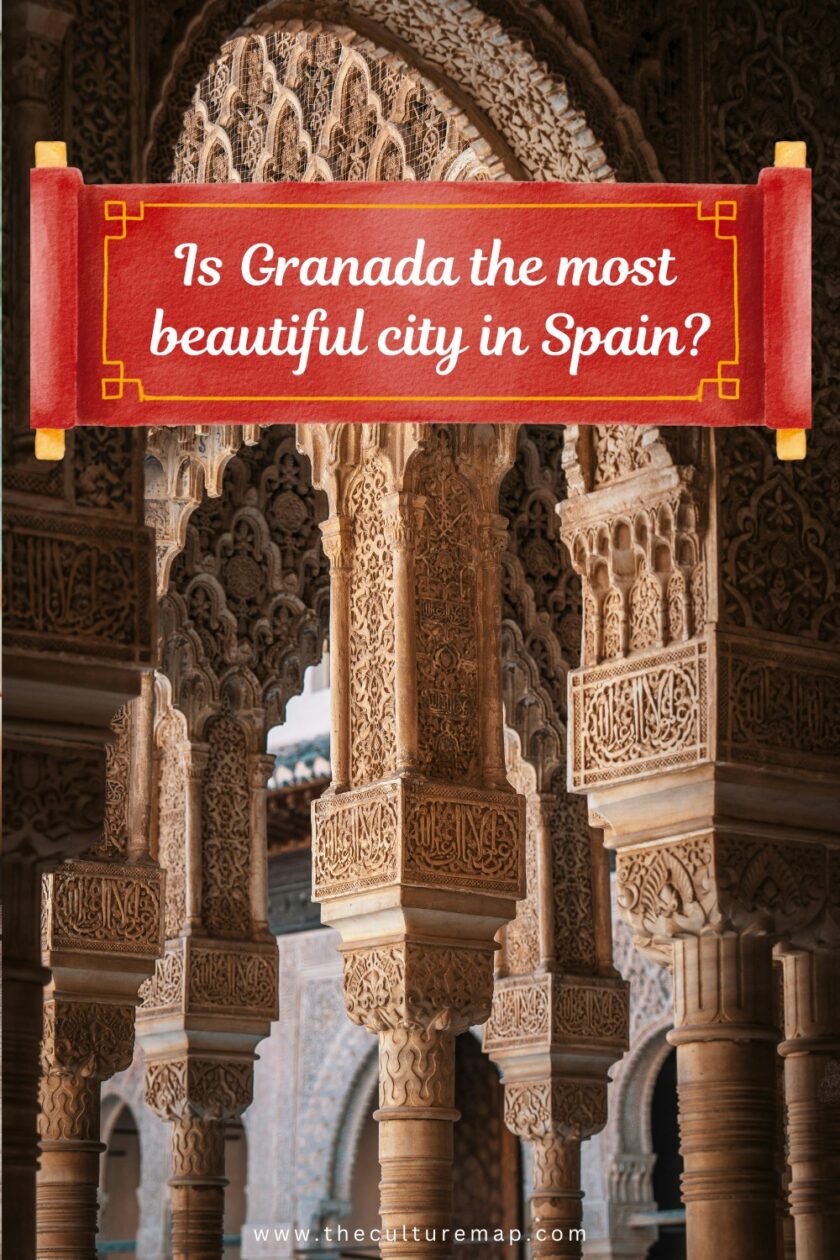
Where to stay in Granada
I chose to stay at Hotel Casa 1800 Granada and I was happy with it. While not super modern, it is comfortable and has lots of character and charm (which I personally prefer) to suit the architectural influences of the city. The hotel is also good value considering its close proximity to the Alhambra.




